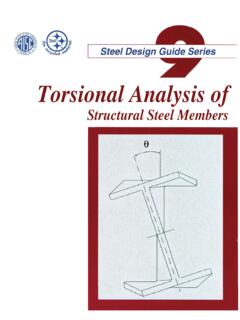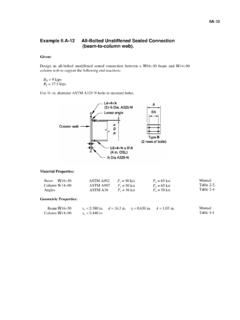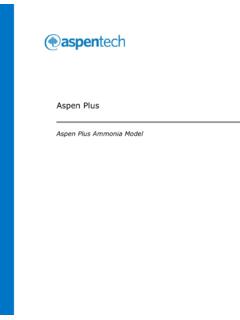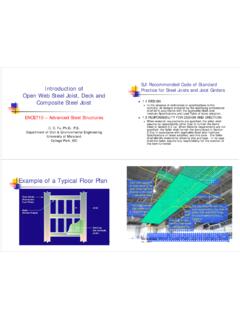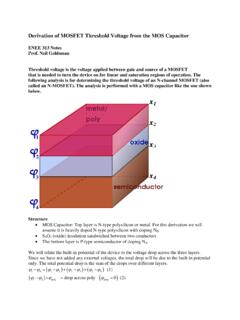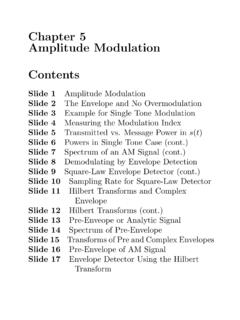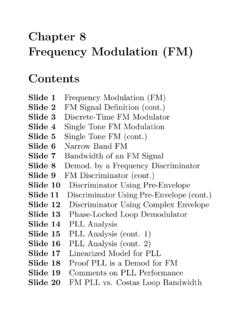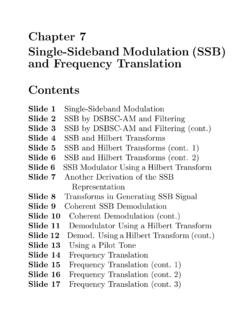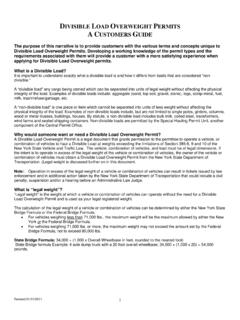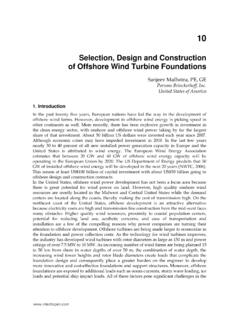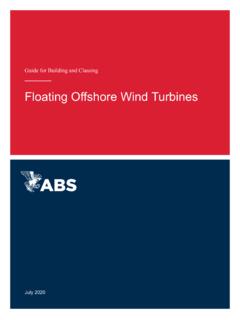Transcription of PART 2 THE AASHTO LRFD SPECIFICATIONS 1.1 Limit ... - UMD
1 I PART 2 THE AASHTO LRFD SPECIFICATIONS INTRODUCTION Limit State load Combinations Design Vehicle Live load Fatigue load Impact (Dynamic load Allowance = IM) wind Distribution Factor STEEL STRUCTURES Steel Material Fatigue and Fracture Limit State Resistance Factor Tension Members Compression Members I-Section Flexural Members Cross-Section Proportion Limits Constructibility Service Limit State
2 (Permanent Deformations) 210 Fatigue and Fracture Limit State Strength Limit State Flexural Resistance-Composite Sections in Positive Flexure Composite Sections in Negative Flexure and Noncomposite Sections Shear Resistance Shear Connectors Transverse Stiffeners Bearing Stiffeners Longitudinal
3 Stiffeners 2-1 PART 2 THE AASHTO LRFD SPECIFICATIONS INTRODUCTION The AASHTO LRFD SPECIFICATIONS are written based on probabilistic Limit state theory with several load combinations listed. These load combinations correspond to four Limit states, Service, Fatigue, Fracture, Strength and Extreme-Event. Service Limit states are restrictions on stress, deformation and crack width under regular service conditions. They are intended to allow the bridge to perform acceptably for its service life.
4 Fatigue and fracture Limit states are restrictions on stress range under regular service conditions reflecting the number of expected stress range excursions. They are intended to Limit crack growth under repetitive loads to prevent fracture during the design life of the bridge. Strength Limit states are intended to ensure that strength and stability, both local and global, are provided to resist the statistically significant load combinations that a bridge will experience in its design life.
5 Extensive distress and structural damage may occur under strength Limit states, but overall structural integrity is expected to be maintained. Extreme event Limit states are intended to ensure the structural survival of a bridge during a major earthquake, or when collided by a vessel, vehicle or ice flow, or where the foundation is subject to the scour which would accompany a flood of extreme recurrence, usually considered to be 500 years. They are considered to be unique occurrences whose return period is significantly greater than the design life of the bridge.
6 -2 Limit State Definition: A condition beyond which the bridge or component ceases to satisfy the provisions for which it was designed. Requirement rniiiRRQ= (LRFD Eq. ) (a) For loads for which a maximum value of i is appropriate: =IRDi (LRFD Eq.)
7 (b) For loads for which a minimum value of i is appropriate: =IRDi (LRFD Eq. ) (1) D = Ductility factor Strength Limit State; non-ductile components and connections = Strength Limit State.
8 Conventional designs and details complying with these SPECIFICATIONS And all other Limit States Strength Limit State; additional ductility - enhancing measures (2)R = Redundancy factor Strength Limit State; non-redundant members = Strength Limit State; conventional levels of redundancy And all other Limit States Strength Limit State; exceptional levels of redundancy (3) I = Operational Importance -3 Strength Limit State.
9 Important bridges ( critical or essential bridges with earthquakes 475-year and 2500-year return periods, respectively) = Strength Limit State; typical bridges And all other Limit States Strength Limit State; relatively less important bridges Example: Major Bridge. Multi-girder Steel. (redundant member) Fatigue = ( )( )( ) = Strength = ( )( )( ) = Others = ( )( )( ) = Minor Bridge.
10 Fatigue = ( )( )( ) = Strength = ( )( )( ) = Others = ( )( )( ) = load Combinations The permanent and transient loads and forces listed in Section shall be considered in the various load combinations. The complete list is in Tables 1-1 and 1-2 (LRFD Table & Table ). iiiqQ = (LRFD Eq. ) (1) Strength I - Normal vehicle, no wind .
